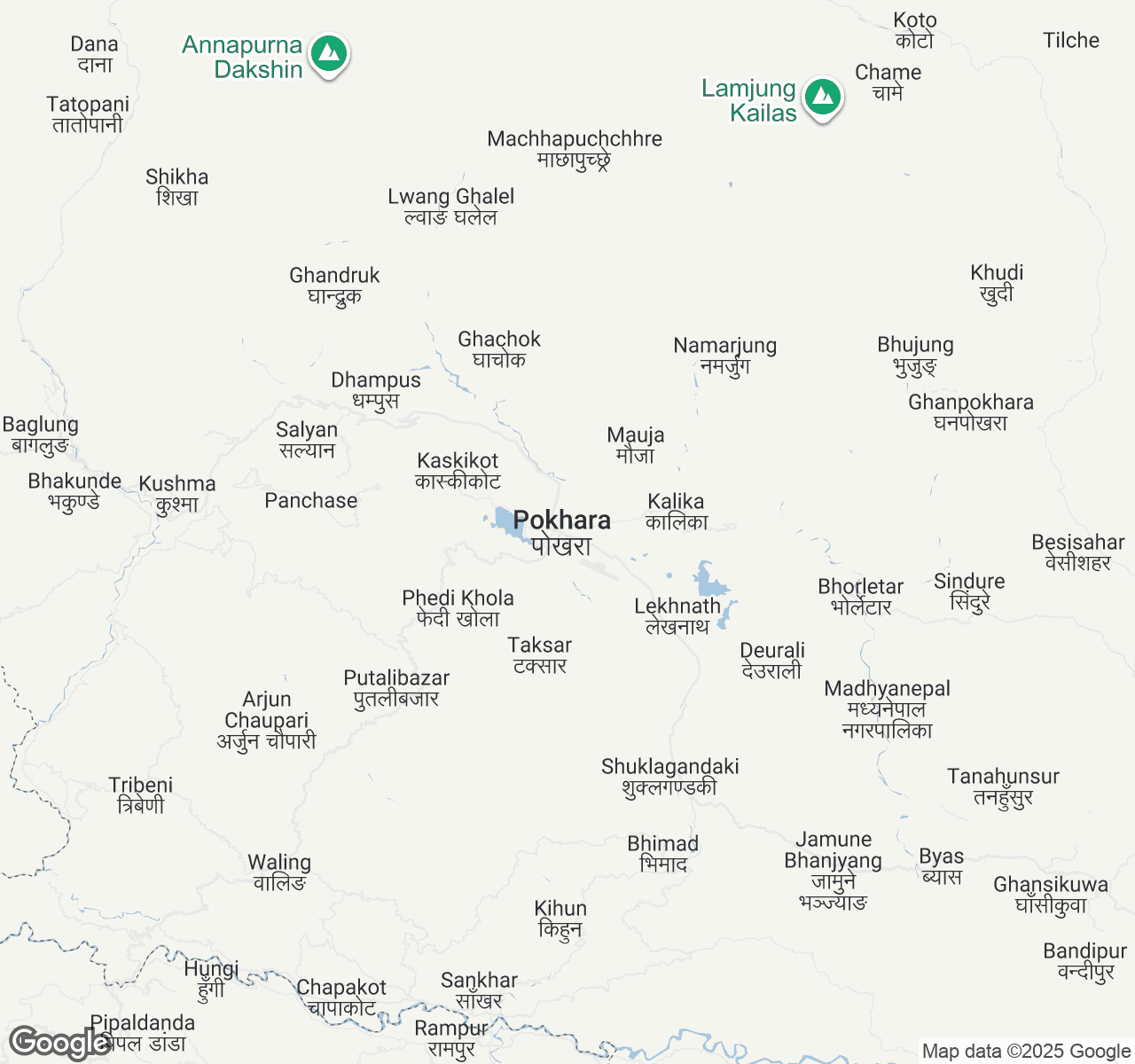
Things to Do in Pokhara
Discover the best of Pokhara
Plan Your Trip
Essential guides for timing and budgeting
Top Things to Do in Pokhara
Discover the best activities and experiences. Book now with our trusted partners and enjoy hassle-free adventures.
Your Guide to Pokhara
About Pokhara
located in the shadow of the mighty Annapurna range, Pokhara awakens the soul with its ethereal beauty and tranquil embrace. This lakeside great destination, where snow-capped peaks mirror themselves in the crystalline waters of Phewa Lake, offers a profound sense of serenity that flows through every cobblestone street and mountain trail. Here, the morning mist dances across emerald hills while prayer flags flutter like colorful whispers in the mountain breeze. Adventure seekers find their calling on world-renowned trekking routes, while contemplative souls discover peace in riverside cafés watching the sun paint the Himalayas in golden hues. Pokhara is more than a destination—it's a meditation on nature's grandeur, where time slows to match the gentle rhythm of lapping waves and distant temple bells. Whether paragliding through clouds or simply breathing in the pure mountain air, visitors leave transformed, carrying within them the timeless magic of this Himalayan sanctuary.
Travel Tips
Transportation: Use prepaid taxi services from tourist areas or download ride-sharing apps like Pathao. For lake exploration, negotiate boat rates beforehand (expect 200-500 NPR). Local buses cost 20-50 NPR but can be crowded; tourist buses offer more comfort for 100-200 NPR.
Money: Carry cash as many establishments don't accept cards. ATMs are plentiful in Lakeside but may run out during festivals. Exchange money at authorized dealers for better rates than hotels. Budget 2000-3000 NPR daily for mid-range experiences.
Cultural Respect: Remove shoes before entering temples and homes. Dress modestly when visiting religious sites—cover shoulders and knees. Use both hands when giving or receiving items. Avoid pointing feet toward people or religious objects, and ask permission before photographing locals.
Food Safety: Stick to bottled or boiled water, avoid ice in drinks. Choose busy restaurants with high turnover for fresh food. Dal bhat (lentils and rice) is usually safe and nutritious. Avoid raw vegetables and fruits you can't peel yourself.
When to Visit
Pokhara's optimal visiting seasons offer distinct experiences for different travelers. October to December delivers perfect conditions with crystal-clear mountain views, comfortable temperatures (15-25°C), and minimal rainfall (under 50mm monthly). This peak season sees 40-60% higher accommodation prices but rewards visitors with spectacular Himalayan vistas and ideal trekking weather. March to May brings spring warmth (20-30°C) with blooming rhododendrons painting hillsides crimson, though afternoon clouds may obscure mountain views. This remains peak season with elevated prices. June to September monsoon season (25-35°C) brings heavy rainfall (200-400mm monthly) and cloudy skies, but offers 30-50% lower prices and lush green landscapes—perfect for budget travelers who don't mind occasional downpours. January-February can be surprisingly cold (5-20°C) with morning fog, but offers budget-friendly rates and fewer crowds. Key festivals include Dashain (October), Tihar (November), and Holi (March). Mountain views are statistically best from October through January. Adventure enthusiasts should visit October-December or March-May, while budget-conscious travelers benefit from June-September rates despite weather challenges.

Pokhara location map